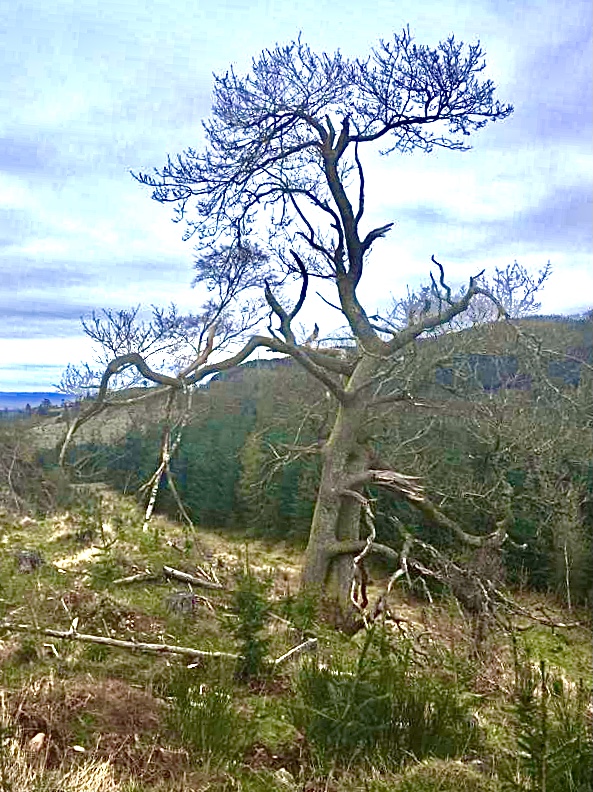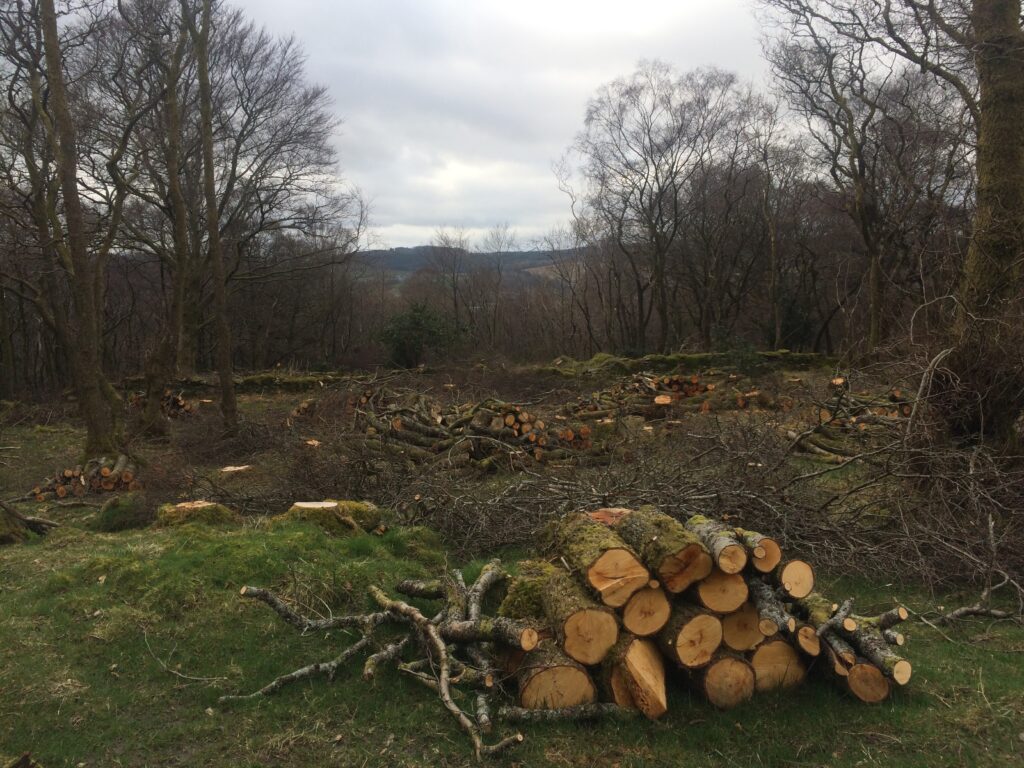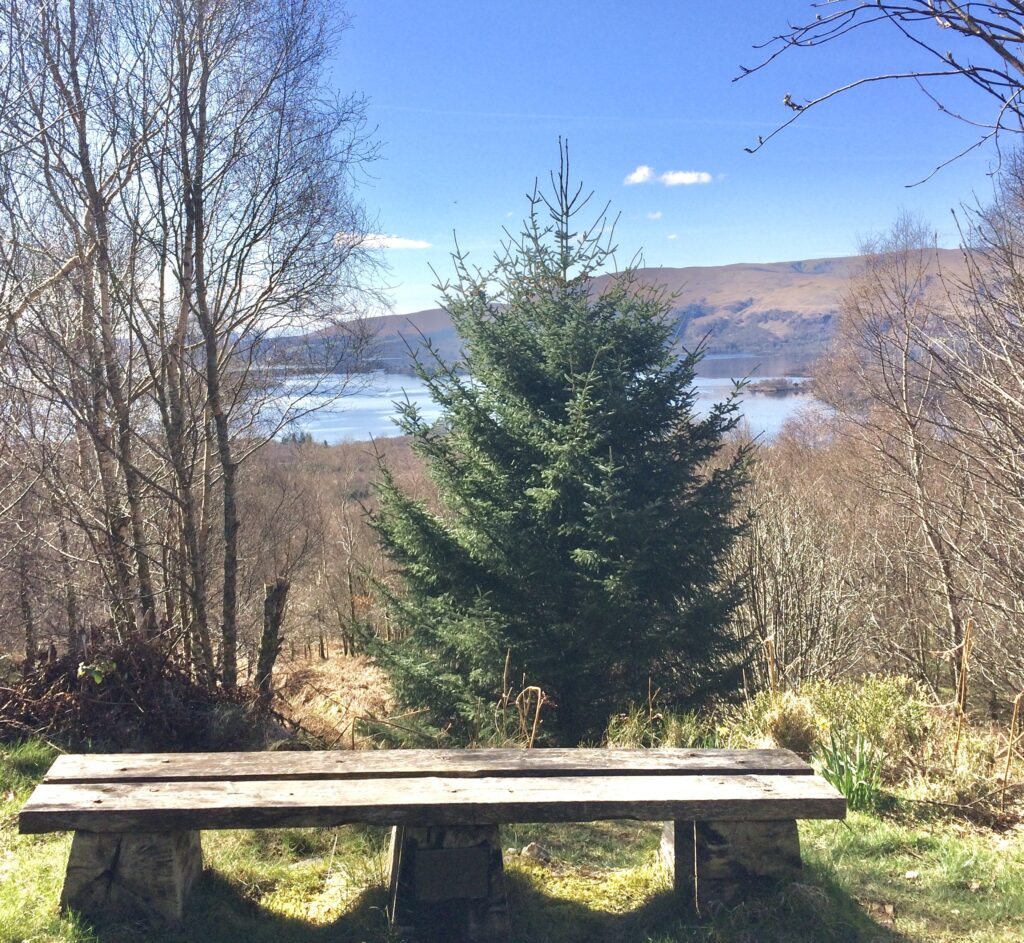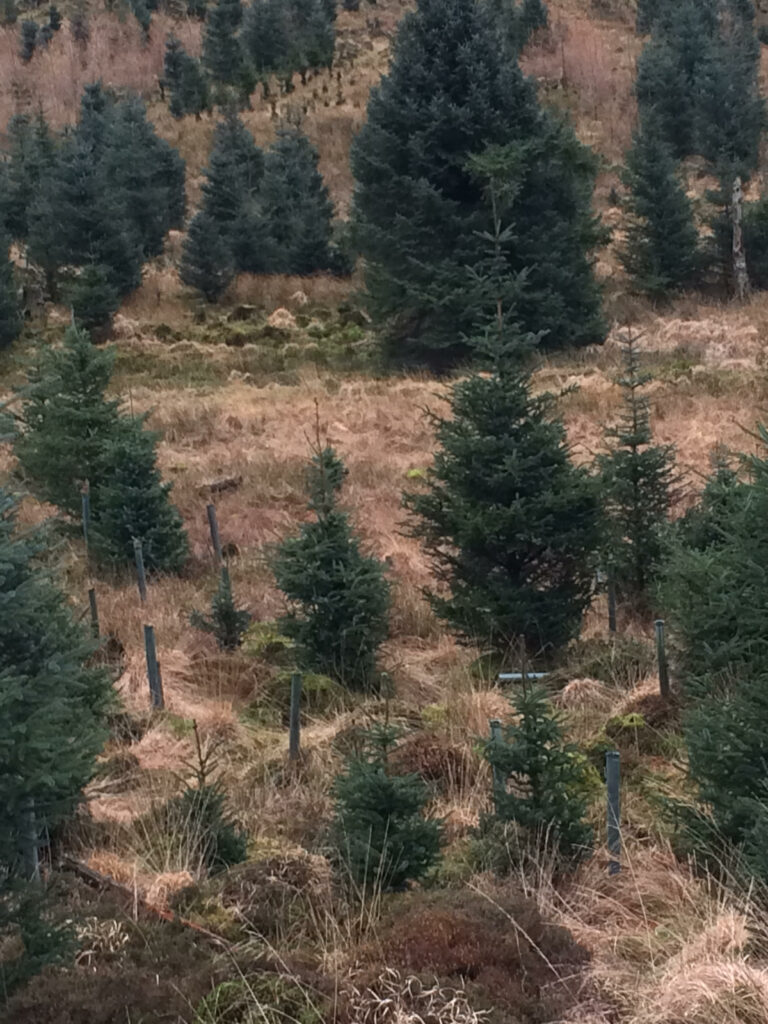Ancient Scots Caledonian Pine Woodlands Nearing Extinction
Scotland’s historic natural identity and biodiversity are being erased. Only 1% of Scotland’s ancient woodland remains and much of it is unprotected in poor ecological condition and with no special designation.1 Ancient woodlands in Scotland are areas of woods that have existed since at least 1750, although many are much older, and have developed irreplaceable and complex ecosystems.
Many of our colourful, life-giving and biodiverse Scottish ancient woods (including temperate rainforest and ice-age Caledonian pine woods) are now infested with invasive species like rhododendron and conifers, and are overgrazed, overexploited and neglected. The United Nations has identified invasive species as the fifth biggest threat to the natural world.2 Governments in other countries around the world like New Zealand have programmes designed to tackle the problem.3
In contrast, 18% of Scotland is covered in woods and forest with only 4% thought to be native and ancient woodland.4 Much of Scotland’s forests and woods are monoculture plantations of highly invasive, non-native commercial conifer species. Sitka spruce, western hemlock and other commercial conifers are self seeding (or wilding) and spreading rapidly into our ancient and native woodlands, peat bogs, hills and other wild lands. The non-native conifers are degrading Scotland’s soil and surface water.5 The Scottish Government proposes a further 18,000 hectares of new planting of mainly commercial conifers on currently unforested land in Scotland from 2024.6 Without effective management this will threaten the future existence of some of Scotland’s ancient and native woodlands. When planted at an industrial scale with little diversity, these plantations act as ‘ecological dead zones’ and can release many years of stored carbon if planted in unsuitable soils.7 These invasive, non-native commercial conifer species are now being found above 900m at altitude levels beyond previously observed. Researchers warn that spreading of species like Sitka Spruce at these elevations need to be managed to limit negative impacts on biodiversity and carbon cycling in fragile mountain habitats. 8

Systemic failure
Public authorities have known for decades that ‘escapees’ of seeds and saplings of invasive conifer species from commercial forestry plantations are a threat to Scotland’s ancient and native woodlands, regardless there is lack of data on the scale of the problem. They also do not have the resources to enforce proper management of commercial plantations and ensure commercial conifers do not self-seed into neighbouring woods and lands.
Importantly, regulatory bodies responsible for protecting Scotland’s ancient and native woodland and ancient and veteran trees via Tree Preservation Orders (TPOs) and felling licences, are not up to the task. Scottish Forestry has not taken forward a single prosecution for unlicensed felling in ancient or native woodland for at least 10 years and does not keep records of public contacts.
Charities like the Woodland Trust Scotland, RSPB, Trees for Life and others, as well as rural communities and volunteers are left to pursue a handful of grants and donations to support their relentless fight in saving the few fragments of ancient and native Scottish woodlands that remain.

Starting a campaign – Help trees help us
Audrey Baird, Fiona Baker and a handful of others started the Help Trees Help Us campaign in 2020 for effective protections for Scotland’s remaining fragments of ancient, native and semi-native woodlands and woodland floors. Key to the campaign was a petition to the Scottish Parliament submitted in 2020.
Audrey worked as a project manager and journalist. While working with communities on the BBC 2 series Restoration, she learned a great deal about resilience, patience, determination, conflict resolution and campaigning. She went on to work with a local authority focusing on community development and supporting grassroots action to identify unmet needs and find novel solutions through community action planning and community empowerment. Using this experience, and with lots of help, she has driven this campaign to save Scotland’s ancient and native woodlands.
Help trees help us and ERCS
With the help of ERCS, Audrey identified that unlike in countries such as New Zealand[1] which has a fully funded national strategy to remove invasive commercial conifers, Scotland’s laws and guidance concerning ‘escapees’ from invasive commercial forestry plantations are ignored. Audrey comments,
“Commercial conifer plantations essentially have a Ministerial Exemption, or free pass, to be invasive, and afforestation infrastructure has ‘permitted development’ status in the planning system. The UK logging industry keeps very quiet about their conifers being invasive and takes advantage of people’s lack of knowledge to identify native and non-native conifers (Scotland only has three native conifers – scots pine, juniper and yew).”
Help Trees Help Us has had extensive contact with the Scottish Government regulator Scottish Forestry over unlicensed tree felling in ancient woodland and invasive commercial conifers. Scottish Forestry chose not to pursue prosecution of a landowner for unlicenced tree felling in ancient woodlands. Instead, Scottish Forestry supported the landowner to undertake a community consultation around a new woodland management plan where the landowner applied to fell hundreds more trees in the small ancient wood. With the help of ERCS, Audrey requested Scottish Forestry to escalate enforcement action as part of their terms of agreement, but this was refused. Even after Help Trees Help Us made formal stage one and two complaints to Scottish Forestry, no action other than the community consultation was taken and Scottish Forestry blames Scotland’s Procurator Fiscal for not engaging with the issue of illegal felling.

The fight for change
Help Trees Help Us fight continues, and they have gained a wealth of experience that others with similar campaigns can learn from. Audrey urges others to use the Scottish Parliament’s petitions process as it has helped raise awareness and generate local and national publicity.
Help Trees Help Us’ campaign is now in its fourth year, but Audrey states, “This is likely only the beginning for us and we’ll keep pushing past the ‘blah, blah, blah’ for ‘real world’ action for native woodland for as long as we can.” The petition has more than 3,600 signatures and the Scottish Parliament’s Petitions Committee has gathered more than 50 written submissions and undertaken multiple verbal evidence-gathering sessions which have included a Govt Minister, local authorities, tree charities, Scottish Forestry, Nature Scot and many others. MSPs have recently been on a site visit to a Woodland Trust managed ancient woodland and the Petitions Committee is now urging the Scottish Government to give all remaining ancient woodland a special designation. It is also seeking to involve two additional Parliamentary committees in the debate. Audrey said,
“We’ve had a long, hard, frustrating four years but, in partnership with other organisations (especially the Woodland Trust, RSPB, ERCS and Strathclyde University) and campaigners, there have been successes along the way. This includes a crucial change in the new National Planning Framework 4 so that development in ancient woodland ‘will not’ be permitted. However, the language in the Framework is ambiguous for our precious native woodland, which is thought to be present in fragments across another 3-4% of Scotland.”

Tips for fighting your own campaigns
Here are Help Us Help Trees’ tips for organising effective campaigns.
1. Observe and understand the problem from absolutely every angle.
2. Identify everyone and everything that is impacted by the problem, and this will lead you to where potential partnerships could be forged.
3. Ask yourself who and what has the power to help you address the problem?
This could include everything from a landowner or statutory body to the law, media and people in your community – some will have skills like working with children, using art to raise awareness, campaign tactics and lobbying, fundraising and other specialist knowledge.
4. Any successes, however small they seem at the time, are worth the battle and should be shared with others. Dwelling too long on failures depletes everyone and everything.
5. Stepping up to campaign or volunteer for Scotland’s natural environment can be empowering for communities and individuals who accept that constructive progress comes from resilience, patience (a campaign could ultimately take a lifetime), dedication/research, partnership working and compromise.
An update from Help Trees Help Us – 5 February 2025
After nearly five years of championing legal protections for Scotland’s ancient and native woodland via our petition, the Scottish Parliament’s Citizen Participation & Petitions Committee axed it earlier today (05/02/2025). We have not achieved our petition’s main objective. But we’re not downhearted because we, and many other campaigners who care about Scotland, have helped get the ball on the right side of the pitch.
“We’re grateful to ERCS, the Petitions Committee, our constituency MSP Jackie Baillie and the thousands of people who signed the petition for their engagement, support and willingness to learn about the catastrophic impacts of Invasive Non Native Species (especially commercial conifers and Rhododendron ponticum), overgrazing and failures to prosecute people who fell trees without a licence. Many more politicians and decision-makers now understand why just 1% of Scotland’s priceless, irreplaceable ancient woodland is left standing (much of it in poor condition) and government ministers, cabinet secretaries and agencies have been pushed hard for answers and action.
Ancient woodland got more protection in planning law via NPF4 (see p44) in 2023, the Government has promised more action on INNS in the new Biodiversity Delivery Plan 2024-30 and we’ve been promised we will celebrate a new Ancient Woodland Register for Scotland launching 2027. It’s been a marathon start. We rest, recharge, get back in the game.”
– Audrey Baird, Help Trees Help Us
Extra information
The petition helped generate helpful local and national media coverage:
- https://www.heraldscotland.com/news/18567342.campaigners-call-full-legal-protection-scotlands-ancient-woods/
- https://www.heraldscotland.com/news/19140698.scotlands-ancient-woodlands-increasingly-threat-msps-told/
You can find updates on the campaign at https://www.facebook.com/helptreeshelpus which is supported by the Royal Scottish Forestry Society and the John Muir Trust.
See Audrey’s initiative with the Surefoot Effect CIC on supporting peers with eco-grief and climate anxiety: Eco – Anxious Resilient Peer Support Initiative.
News piece on the Help Trees Help Us campaign: https://news.sky.com/video/forests-face-biodiversity-crisis-12505022
Written by Audrey Baird, Help Trees Help Us
References
1. Woodland Trust (accessed 27 June 2023), Campaign win: new planning rules protect Scotland’s ancient woods and trees
2. IPBES (2019), Report of the Plenary of the Intergovernmental Science-Policy Platform on Biodiversity and Ecosystem Services on the work of its seventh session
3. Ministry for Primary Industries (New Zealand) (accessed 18 May 2023), Wilding conifer control in NZ
4. Woodland Trust (accessed 27 June 2023), Woodland Trust Scotland
5. Soil Association (January 2022), Regenerative forestry evidence
6. Scottish Forestry (accessed 18 May 2023), Scotland showing leadership on climate forests
7. John Muir Trust (accessed 18 May 2023), The rise of green lairds
8. Watts (2023), High mountain trees: altitudinal records recently broken forelevendifferent tree speciesin Britain, British & Irish Botany5(2):167-179




